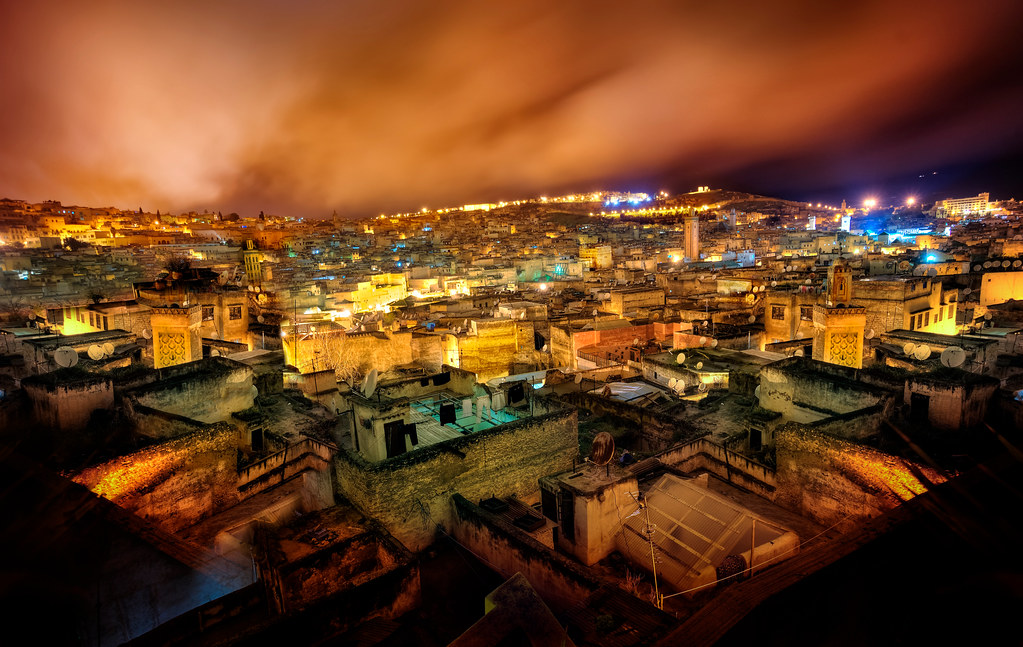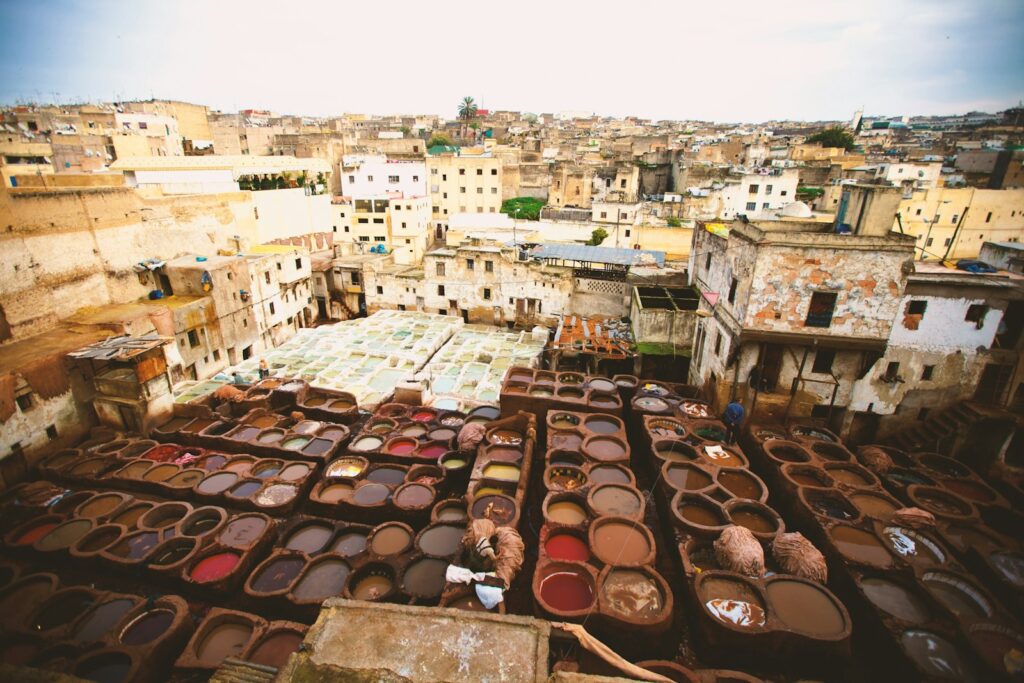

Fes: The Timeless Heart of Moroccan Culture
Introduction
Fes, often referred to as the “Athens of Africa,” stands as one of Morocco’s most culturally and historically significant cities. Founded over a millennium ago, it has long been a beacon of learning, spirituality, and craftsmanship. The city’s labyrinthine medina, vibrant souks, and centuries-old monuments transport visitors to a bygone era, making Fes a must-visit for those seeking to immerse themselves in the authentic heart of Moroccan culture.
I. Historical Overview
A. Founding of Fes
Fes was established in the late 8th century by Idris I, the founder of the Idrisid dynasty, who sought to create a powerful new capital that would serve as the political and spiritual center of his burgeoning empire. Situated at the crossroads of several important trade routes, Fes quickly grew in prominence, attracting scholars, merchants, and artisans from across the Islamic world.
B. Golden Age
The city reached its zenith under successive dynasties, particularly during the Almoravid, Almohad, and Merinid periods. Fes became a hub of intellectual and cultural exchange, renowned for its scholars, poets, and theologians. The founding of the University of Al Quaraouiyine in 859 by Fatima al-Fihri, a visionary woman, marked a significant milestone in the city’s development. This institution, recognized as the oldest existing university in the world, became a center of learning that attracted students from across the Muslim world and beyond.
C. Modern Era
Fes’s fortunes waxed and waned over the centuries, but the city remained a vital cultural center. During the French Protectorate (1912-1956), Fes played a crucial role in Morocco’s struggle for independence. Today, while the city continues to honor its rich heritage, it also embraces the challenges and opportunities of modernity, preserving its unique identity in a rapidly changing world.
II. The Medina of Fes (Fes el-Bali)
A. Layout and Architecture
The medina of Fes el-Bali is one of the largest and best-preserved medieval cities in the world. Its narrow, winding streets form a dense maze, where each turn reveals a new facet of the city’s architectural splendor. Traditional houses, or riads, with their ornate zellige (mosaic tilework) and serene courtyards, offer a glimpse into the refined tastes of Fes’s inhabitants. The city’s architecture is a testament to the skill and artistry of the craftsmen who have passed their knowledge down through generations.
B. UNESCO World Heritage Site
In 1981, the medina of Fes was designated a UNESCO World Heritage site, in recognition of its outstanding universal value. This designation has helped to spur efforts to preserve and restore the city’s many historical monuments, ensuring that Fes remains a living museum of Islamic and Moroccan heritage. However, the task of maintaining such a vast and intricate urban landscape presents ongoing challenges.
C. Notable Monuments
Fes is home to some of Morocco’s most significant religious and educational institutions. The University of Al Quaraouiyine and its adjoining mosque are perhaps the most famous, representing the city’s role as a center of Islamic learning. The Bou Inania Madrasa, with its stunning cedar wood carvings and intricate stucco work, is another architectural gem, as is the Al-Attarine Madrasa, renowned for its beautifully crafted zellige and marble.
III. Cultural and Religious Significance
A. Fes as a Spiritual Hub
For centuries, Fes has been a spiritual hub, attracting pilgrims and scholars alike. The city’s numerous mosques, madrasas, and zawiyas (Sufi lodges) are a testament to its deep religious significance. The annual Moulay Idriss II Festival, held in honor of the city’s founder, draws thousands of devotees who come to pay their respects at his shrine, located in the heart of the medina.
B. Annual Festivals
Fes is also known for its vibrant cultural scene, most notably the Fes Festival of World Sacred Music. This annual event, which brings together musicians and performers from diverse spiritual traditions, is a celebration of the city’s rich cultural heritage and its role as a crossroads of civilizations. Other festivals, such as the Sufi Music Festival, further highlight the city’s deep spiritual and cultural connections.
IV. Fes in Contemporary Times
A. Modern Life in Fes
Today, Fes is a city of contrasts, where tradition and modernity coexist in a delicate balance. While the medina remains largely unchanged, the Ville Nouvelle (New City), built by the French in the early 20th century, offers a glimpse of modern Morocco. Here, wide boulevards, contemporary shops, and cafes cater to the city’s growing population and its visitors. Yet, despite these modern influences, the soul of Fes remains firmly rooted in its past.
B. Fes as a Tourist Destination
For travelers, Fes offers a wealth of experiences. The medina is a treasure trove of sights, sounds, and smells, from the bustling souks where artisans ply their trade to the tranquil courtyards of ancient madrasas. The Royal Palace, with its imposing gates, and the Jewish Quarter (Mellah), with its historic synagogues and narrow streets, provide further insights into the city’s rich history. Visitors can also indulge in the city’s culinary delights, from fragrant tagines to sweet pastries, and experience the warmth of Moroccan hospitality in a traditional riad or luxury hotel.
V. Challenges and Opportunities
A. Urban Development vs. Heritage Preservation
As Fes continues to grow, the city faces the challenge of balancing urban development with heritage preservation. Efforts to modernize infrastructure and improve living conditions in the medina must be carefully managed to avoid compromising the city’s historical integrity. Preservation initiatives, such as the restoration of key monuments and the promotion of traditional crafts, play a crucial role in maintaining the city’s unique character.
B. Sustainable Tourism
Tourism is a vital part of Fes’s economy, but it also presents challenges. The influx of visitors can strain the city’s resources and impact the daily lives of its residents. To address these issues, there is a growing emphasis on promoting sustainable tourism practices that benefit both the local community and the environment. Initiatives such as guided tours that support local artisans, eco-friendly accommodations, and cultural exchange programs are helping to ensure that Fes remains a vibrant and welcoming destination for years to come.
VI. Personal Stories and Anecdotes
A. Local Perspectives
The true spirit of Fes can be found in the stories of its people. From the master craftsmen who have dedicated their lives to preserving traditional arts to the shopkeepers who have witnessed the city’s evolution over decades, each resident has a unique perspective on what makes Fes special. Visitors often remark on the warmth and hospitality of the locals, who are eager to share their knowledge and love of their city with newcomers.
B. The Spirit of Fes
Walking through the medina, it’s easy to lose track of time as you wander from one discovery to the next. The city’s timeless atmosphere, with its echoes of centuries past, creates a sense of connection to something greater. Fes is a place where history and tradition are not just preserved but lived, where the past is woven into the fabric of daily life. This enduring connection to its heritage is what makes Fes a truly unique and unforgettable destination.
Conclusion
Fes is a city like no other, a place where the past and present coexist in perfect harmony. Its rich history, cultural significance, and timeless charm make it a must-visit destination for anyone seeking to experience the true essence of Morocco. Whether exploring the ancient streets of the medina, marveling at the city’s architectural wonders, or simply soaking in the atmosphere, visitors to Fes are sure to leave with memories that will last a lifetime.